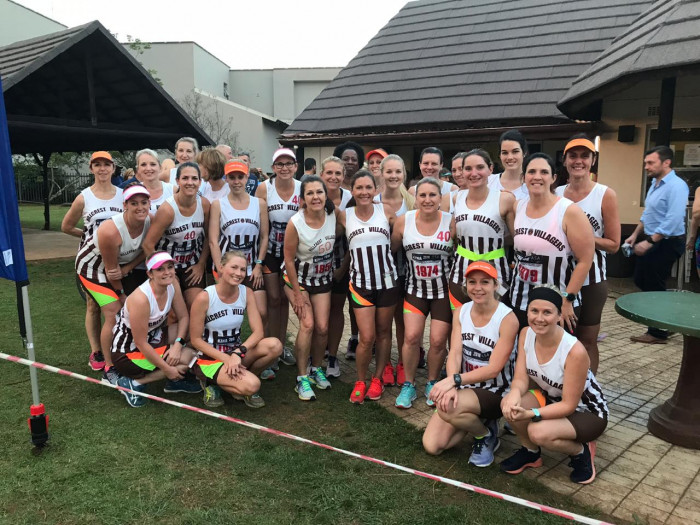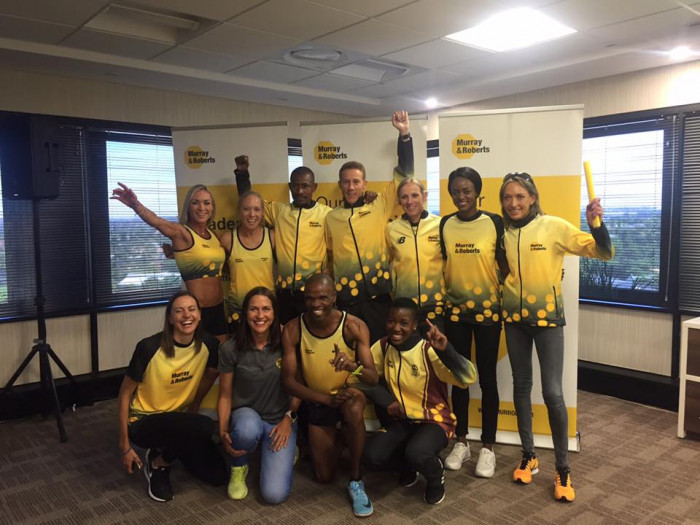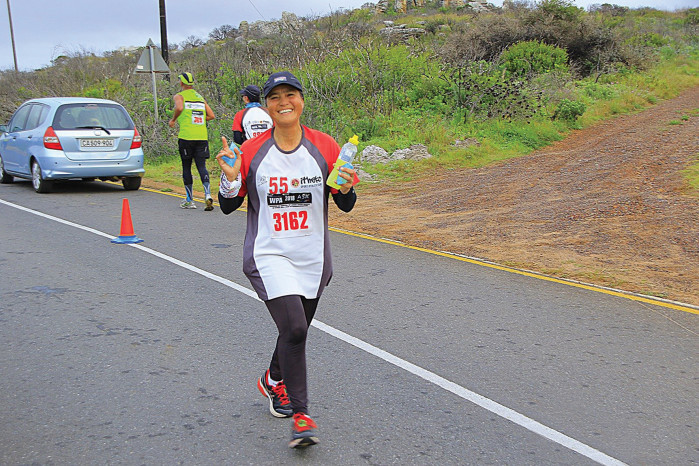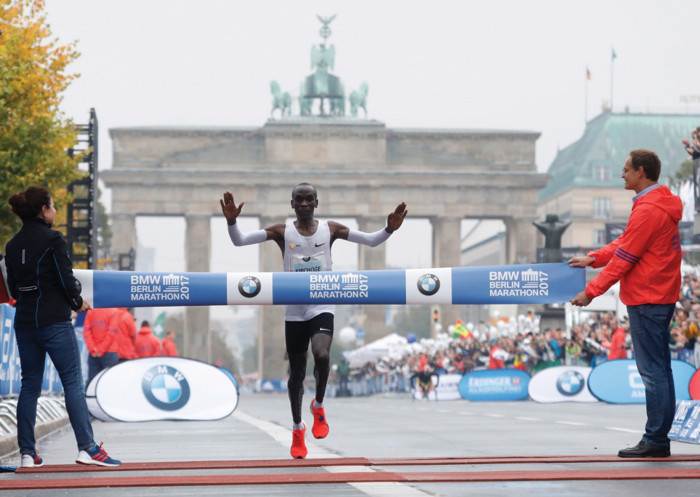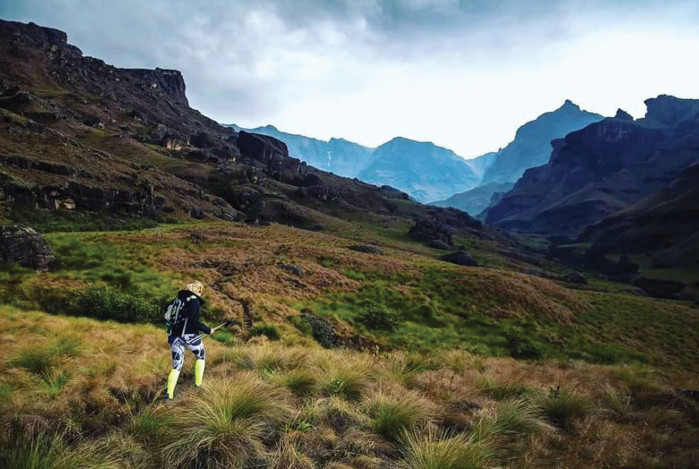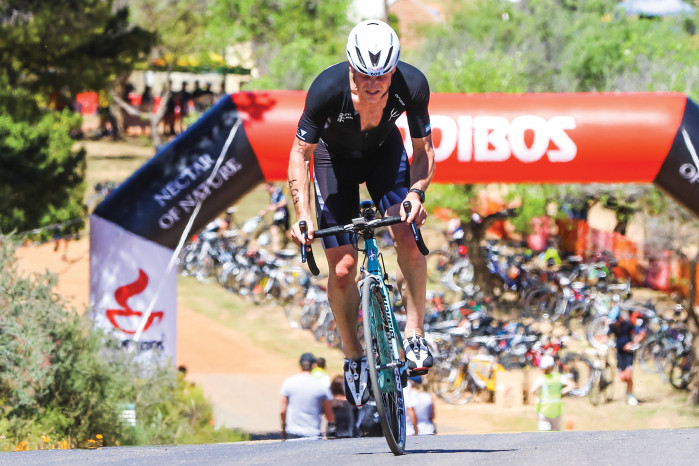Every outdoor activity carries inherent risk, and as runners, we are certainly aware of the dangers presented by technical terrain, rapid weather changes, unclear paths or exposed climbs. Sadly, however, a rolled ankle, heatstroke or a hidden puffadder are not our primary dangers any more. The threat of personal attack is on the rise, and the buzz on every running forum is centred on safety precautions and solutions. – BY KIM STEPHENS
This situation flies in the face of some of our fundamental reasons for running: Freedom, solitude, and the flexibility to enjoy our sport at any time of the day or night. The reality is that we all need to apply some practical thinking to our training patterns, and work as a community to protect each other and our sport.
The first step in empowering our running community is to better understand the risks. The news reports on the most recent attacks on Table Mountain have been sorely lacking in both fact and detail, leaving many of us guessing when it comes to where we should run, and what we should look out for. Fortunately, some brave victims from across South Africa have shared their stories here in an effort to put the missing pieces together. (We must just advise anyone currently working through the trauma of violence or personal attack that there are many triggers within the following stories.)
Beach Attack
The small surfing town of Jeffreys Bay in the Eastern Cape offers an idyllic holiday destination, but it became a runner’s nightmare for visitor Charlotte Noble of Cape Town, a former Comrades gold medallist and now elite age-group trail runner. “I’ve run for 30 years all over this country, and in very remote places abroad, and never felt threatened or had an incident. Then in June last year we went to J-Bay for a family surfing holiday, staying on the beach near Supertubes, and found it a busy town with a lot happening at that time of year,” recounts Charlotte.
“I trotted off on my long run, planning to run to St Francis and call my husband when I got there. I stopped a couple times to take some sunrise pics and have a snack, then at 11km decided that I’d run back and save Andy the drive, and run to St Francis another time. Two kays from the town, on a long stretch of beach with fishermen 800m ahead, I looked up to see a man 50m ahead, walking towards me. Then suddenly to my left running at me was another guy!”
“I’ve always thought if attacked on a beach I’d run into the sea and out-swim any guy, but the sea was rough and so I stopped waist-deep and they fell onto me, dunking my pack with my phone in it. ‘Phone, phone,’ the one kept saying. ‘I’m giving you my phone,’ I replied, trying to get it out the drenched pocket. He then produced a huge knife and proceeded to cut my Salomon racing pack off me, then the two ran off, seemingly arguing about who should get what.”
“I was physically fine, just a scratch wound on my chest from the blade, but psychologically I was stuffed. Initially I was ecstatic to be alive, to get back to my kids and family, but for weeks I was jumpy, and I did not run for days after. My lessons… Don’t run without knowing where poorer areas are in relation to your route, out-and-back routes are problematic because you risk being ambushed, and pepper spray or a taser is useless if attacked by more than one assailant. Also, why carry an expensive phone? Now I’m training up my Ridgeback pup, as I believe trail dogs to be the best deterrent and alarm system.”
Right in the Suburbs
Road runners are not exempt from the threat of attack, which has seen a rapid rise in the number of social running groups springing up on both tar and trail. Cape Town runner Susan O’Connor changed her running approach after an attack on a popular running route. “I was attacked on a beautiful summer’s morning running over the bridge from Bishopscourt to Wynberg at the top of Edinburgh Drive. It was the same route I ran every Sunday at 6:30am if I didn’t have a race on,” she says.
“I used to run on my own to have some peace and quiet in my life and a time to reflect in general, but after the attack I was petrified to run on my own. My training dwindled to nothing, because I hardly ran for the first six months after the attack. I kept on looking over my shoulder when I left the safety of my front door, and I could only manage about 1km down the road. I eventually joined a group of girls who ran in the area and they got me back into the swing of things. The positive side of this was I made new friends.”
“I was furious in the beginning that this person had chosen me that day to attack, but as most of us who survive these attacks and come out in one piece always say, ‘It could have been a lot worse.’ I fought back and realised how strong I actually was in the fight or flight mode. Unfortunately, it is not safe to run on your own, but if you do decide to do so, take mace with you and let somebody know the route you are running. I sometimes run with two little mace containers, one in each hand and I am always ready.”
Negotiation Time
Ian Hendry from Johannesburg is a regular work commuter, either with his running pack or on his bike, and one of his favourite routes is The Spruit. “This day, because I was running, I decided to follow the river under the road bridge and then come up the other side, so as to not have to cross the road. As I was coming up, I saw a man in blue overalls coming towards me, also on his way commuting to work, I assumed. I was on a 70cm wide section of concrete ledge, so I moved to the open side to allow him to pass me on the wall side. I even greeted him with a hearty ‘Good morning!’”
“As we crossed, he grabbed my Camelbak chest-strap with his left hand, pushed me slightly back towards the edge of the ledge and pulled out a knife with his right hand. He put the knife against my throat and told me he wanted money, my cellphone and my Camelbak.” What followed was a surprisingly calm negotiation, as Ian was adamant about keeping his running pack. They settled on him handing over his cellphone and the R30 that was in its cover, and then the man retreated under the bridge.
“On insistence from my boss, I went to see an ICAS psychologist for a few sessions. I thought I was okay, but a number of things surfaced in the sessions. For one, I kept replaying in my mind what I could have done, ranging from smashing his head into the concrete wall, grabbing the knife and jabbing him, pulling him back over the edge into the river, etc. In the end, the way I handled it was the best – my only thought at the time was to negotiate to get out of there!”
“South African men, in particular, are tough, and don’t need to talk to people about these things – we are okay and it’s the women who need to talk about their feelings, or so we are conditioned to think. That’s utter rubbish! I thought I was okay, but I needed to talk to someone. Now, whenever I speak to someone who has been hijacked, had a home robbery or been mugged, I strongly advise that the men see someone,”
Fellow Mountain Users?
A few months ago, Claire-Louise Worby and a friend were accosted on the contour path above Cape Town’s beautiful Newlands Forest, close to the turnstile. “Whilst running along the single track, we came across two men who were dressed in smart and appropriate walking gear. They looked very much like two walkers enjoying the trail. Upon approach, the first man passed us as we stood aside to let them walk past on the single track. We even greeted each other politely as he walked past first myself and then my friend, but when the second man came up, they closed in on us. They calmly said, ‘Ok, we will kill you. Give us what you have.’”
“My friend and I froze as they searched not only our pockets, but our sports bras and our underwear. They groped and grabbed every inch of our bodies. In what I now know as a survival instinct that can happen other than ‘fight or flight’, my friend and I stood frozen. We only had our car keys, and I had my cell phone. I also had mace in my pocket. At one point I had my hand on it, but in better judgement gave it over rather than aggravate one or both of them.”
“When they took the keys and my phone, they insisted we must have more – they wouldn’t accept that my friend didn’t have her phone. The one man was holding me by the back of my running vest as the one who had been searching my friend suggested, ‘Let’s just rape them.’ In a haze, I recall my friend saying to them that they had everything, whilst I peeled myself out of the zip-up running vest that the man was holding and we just ran.”
“I still don’t understand how it all happened, and am grateful we got away safely. On our way down the mountain, we came across other women, running on their own. The first had a running belt with her phone and she called a contact who worked for mountain rescue to alert them. We told the other women to turn around. The SANParks ranger was already there when we got down and was incredibly proactive.”
This devastating experience has taken Claire off the trails she loves, but she hopes to return, in time. When she does, she says it will be with large groups only. She adds that she has found the trauma counselling at the Rondebosch Police Station to be of huge help. And her advice centres on the small, practical choices we can all make: “Don’t run with anything that will attract someone, like headphones. I’m still on the fence about self-defence things like pepper spray, though. Now, when I run on my own on the road, I arm myself with pepper spray, but I think there is a time and place for defending yourself. I know that giving up your personal belongings is far less of a sacrifice then getting into a heavy altercation. In my situation, an aggressive move could have jeopardised my own and my friend’s safety.”
Sidebar: Safety Warning for Table Mountain
The Table Mountain National Park (TMNP) is primarily an open access park and SANParks says that from time to time there is criminal activity in some of the urban edge areas of the Park. In answer to these challenges the TMNP has recruited and deployed Visitor Safety Officers (VSOs) to patrol these popular use zones in the Park, act as a deterrent to criminals, and give safety advice to mountain users. Furthermore, Saskia Marlow, the SANParks Hospitality Services, Film and Events Manager of TMNP says, “We actively encourage people to run in a group, leave their valuables at home and ensure they have let someone know where they are going and when to expect them home.”
Knife Wounds
Another harrowing experience last year occurred when Kent Venish was covering the 8km of road on the way to his much-loved trail playground in Gonubie, near East London, when he mistook his assailant for a late night reveller making his way home in the early light of morning. “In the next second he was on me and pulled me off my feet by my pack, which snapped the plastic clips across my chest. He shouted he wants money, I had none, and it was at this point I saw the knife.”
“They say fight or flight… well, maybe in hindsight I should have ‘flighted.’ Anyhow, I attacked him by closing the distance so he could not use the knife. I parried with my left arm which took three stabs and then locked his arm and proceeded to bend it backwards until it broke. He screamed blue murder and kicked me to the ground, then stumbled off with my bag and kit in it. I got up, shouting at him and started chasing him down, and I had taken a few running steps when I suddenly realised I was breathing through the side of my chest. I had been stabbed in the side of my chest and instantly knew I had a more serious problem than my kit being stolen, so I stopped chasing.”
Kent was rescued by a gentleman on his way to work, who piled him into his car and drove him home, where his wife then took him to hospital. He has fully recovered since then, and vows not to let this incident rob him of his love for trail running, but his wife no longer allows him to run in that particular area!
Roaring Response
Seasoned multi-sport athlete, Kim van Kets has a rather refreshing take on the safety issue. “I have run for 30 years on every beach, jeep track and path I can find, often alone. Not once in all this time have I experienced anything other than kindness, humanity and goodwill from everyone I have met. Until a year ago. I was just finishing my last long run with a heavy pack in preparation for the Kalahari Augrabies Extreme Marathon and I was running alone on deserted farm roads early in the morning. As I was approaching a crossroads, a guy approached running from the opposite direction and we both turned and started running down the same road. We were moving at a similar pace, so I greeted him, commented on the weather and overtook him.”
“A while later he overtook me and this happened a couple of times. Every time we passed each other I engaged with him. I found him non-threatening, I registered that he had a pleasant face, I felt no fear or anxiety at his presence. After about 2km he pulled off the road, and as I approached him he came towards me and said, ‘Give me your cell phone!’ I thought I must have misheard him, maybe he was asking for the time, so I went right up to him, and only then did I register that he was brandishing a huge rock in my direction.”
“Something happened in my head. I roared at him repeatedly that I would kill him if he took one step closer, and I think I did something similar to the New Zealand Haka. I’m not sure exactly how long this went on for, but I roared so hard that my throat hurt for days. He kept coming at me, and I kept roaring/Haka-ing, and there was eventually a weird Mexican standoff. At some point I also picked up a rock, because I wasn’t sure how long I could maintain the upper hand with just my voice. I sort of registered through my rage that if he was going to crush my skull, he would have done so by now, so I started to back away, still roaring/haka-ing/brandishing, and eventually I turned and started jogging away.”
“I was lucky, but so was he. I don’t know what would have happened if he had tried to hurt me, but I think he would have come off second best. I don’t think he was a hardened criminal, and I actually felt rather a lot of compassion for him afterwards. I think he was quite young, not more than 18. I bumped into my husband about 2km down the road and we went to look for him, because I had a strong sense that he needed someone to tell him that he had crossed a line that day, and that he needed some guidance. I didn’t find him, though, and I regret that. Anyway, from now on he will hopefully realise that not all middle-aged ladies are necessarily easy targets.”
“I also realised after the incident that having a pepper spray or taser in your bag is a total waste of time. If you have a weapon, it must be in your hand. Also, cross the road, smile and wave. Don’t engage or go up to someone. I have not changed my running habits at all, but I do have a plan now in case I need it, and it involves speed, aggression and surprise.”
Criminal Gang
Running within the safety of well-organised events is a great way to experience new routes and venues, with marshals and fellow runners to maintain your security, but when not running in an organised event, group runs remain a key first line of defence. One runner who swears by the power of having a running crew is Kerry Red (above centre, making victory sign) from Cape Town, who was attacked in March 2017. “It was a pretty typical Monday morning, I woke up, put on my running shoes and headed out on my usual pre-work morning run from Muizenberg to Kalk Bay and back. I had been doing this same run most mornings for more than three years without incident.”
“From Muizenberg to St James, I ran along what is known as ‘The Catwalk,’ a great pathway between the train tracks and the ocean. I love running there. I noticed a guy with a bicycle who I had seen earlier, on my way to Kalk Bay, and I got a bad feeling about him, but there were other people about. There was a girl on the bench tying her shoe, and there was another runner up ahead, about to disappear on the path, so I thought it must be safe. As I passed the guy, and then the girl, a man with a hoodie stepped out from the tunnel that runs underneath the train tracks to the road. I tried to pass but he blocked me and in that split second I knew.”
“I immediately started to scream as loud as possible, so much so that I didn’t have a voice for a week! He pulled a gun out and held it to my stomach, and with the other hand he started grabbing at me. I fought back, all the while screaming, and but when I looked to the side, I noticed that the ‘lookout’ and the girl tying her shoe were involved in this as well. Eventually he had me pinned down on my haunches against the wall, but I was still fighting back and screaming as loud as I possibly could.”
“The thing that saved me was that two people close by heard me screaming. They shouted back from the tunnel, then came to investigate the screaming and witnessed the scene. This startled my attacker and gave me the slightest gap to get away. I climbed over the train tracks and started running in the direction of the Muizenberg Police Station, which was about 1.5km away, and it felt like the longest, toughest run of my life. My legs felt like lead. I got to the police station and eventually, after much pleading, managed to get them to come with me, as I suspected the attackers would’ve still been in the area. It’s a massive relief that we managed to catch them and get the gun, which was fully loaded and ready for use!”
“It is a complete miracle that I walked away unharmed, and I thank God for that. In the words of the policeman taking my statement, ‘Lady, do you know how lucky you are to be alive?’ It turned out that the three already had warrants out on them for other crimes, but it took a full year for the court case to take place, with me constantly having to follow-up with the police. They are so understaffed and service such a large area that it felt like a losing battle at times.”
“After the incident, and a range of every kind of emotion one can imagine in the days after – I did go for trauma counselling – I went on to the community Facebook page to alert the locals of what had happened and requested that if anyone had experienced something similar, to please go to the police station, as their attackers may have been the same guys that attacked me. It’s so important to report these things, I cannot emphasise that enough.”
“As I hit the post button, I noticed the post directly under mine. Incredibly, it read ‘We are a newly formed group of trail runners in the area. If you are keen to join us for a run, get in touch.’ Well, this was just heaven sent! Up until that point I had been running on my own on the road, as I didn’t really have any other options, but after my incident, the amount of loved ones begging me to quit running, or saying ‘please don’t run on your own,’ was overwhelming.”
“I had actually strapped on my shoes and gone for a run the day after my attack, because I do not want to live in fear, but I got into contact with the Muizenberg Trail Dawgs and joined the group, and it has been so incredible. We have all become great friends and the group has grown so much over the past year and a half. I am, in some strange way, so very grateful that everything happened the way that it did, as something so awesome came out of such a horrible incident. We’ve built such strong friendships as a result, and a group of the ‘Dawgs’ even accompanied me to court when I was asked to testify. They have been such a great support.”
Take Back Control
In spite of all these frightening stories, it is not all doom and gloom in the world of running, it is simply time for us to work on making it better. So what can we do? For starters, there are a few proactive, protective items and devices you could consider carrying, such as Mace, the world’s most popular brand of pepper spray (available through various retailers, including Cape Union Mart), or a pocket-size stun gun (available through Takealot). You could also purchase a Run Angel wristband from We Run (https://werunonline.co.za), which emits an ear-piercing alarm when you push the button, and pairs with smartphones via a free app to send out alerts in the event of an emergency.
Furthermore, companies like Cape Town-based ACT Personal Safety offer courses to improve situational awareness and proactive strategies for hostile confrontations. “We also advise pre-planning and a thorough understanding of the risks and preventative measures before deciding on self-defence devices or strategies,” says Kelee Arrowsmith of ACT, adding that running groups or organisations should avoid over-sharing their crime-prevention strategies, which only serves to pre-warn the criminals.
It is worth remembering that if we all stay away from our favourite running playgrounds for fear of our safety, we only serve to make them more isolated, dangerous zones. In short, the wisest advice seems to be to get out there in your numbers, take back the spaces that make us all feel most alive, and keep running!
Sidebar: Have your ICE Numbers Ready
It is vital to have the correct emergency numbers saved to your phone. In so doing, you can get help that much quicker if attacked and injured, and you position yourself as a potential rescuer. Research the numbers for your specific area, but here are a few general numbers to begin with.
• Flying Squad (national) – 10111
• Ambulance (national) – 10177
Cape Town
• Cape Town City Emergency – 021 480 7700
• Table Mountain Rescue – 021 937 0300
• SANParks Visitor Safety – 086 110 6417
Central Gauteng
• Johannesburg Central – 011 375 5911
• Roodepoort – 011 375 5911
• Sandton – 011 375 5911
KwaZulu-Natal
• Durban Metro Police – 031 306 4422
• Durban Metro Ambulance – 031 307 7744

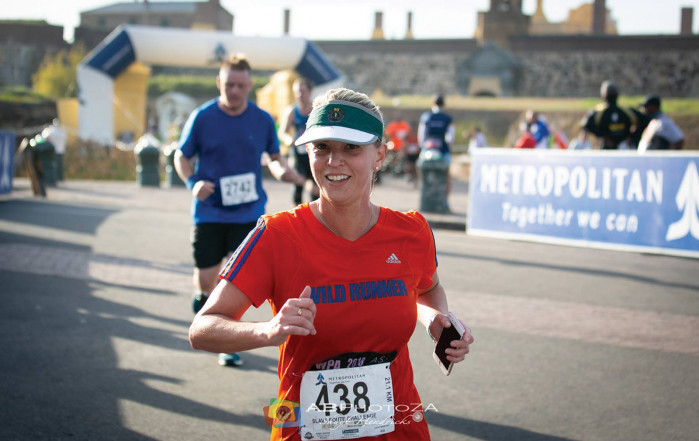
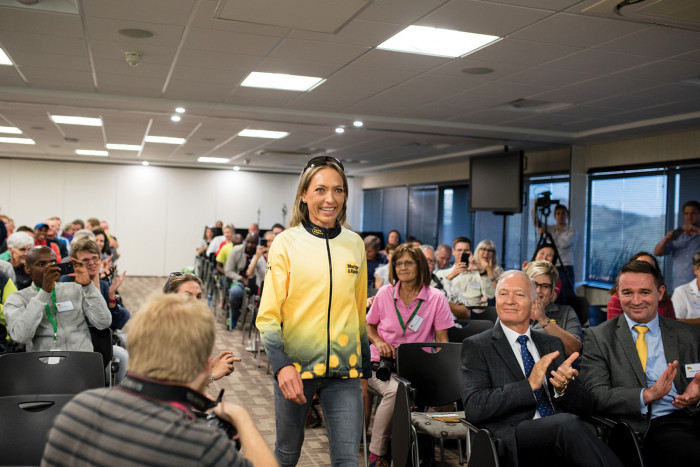

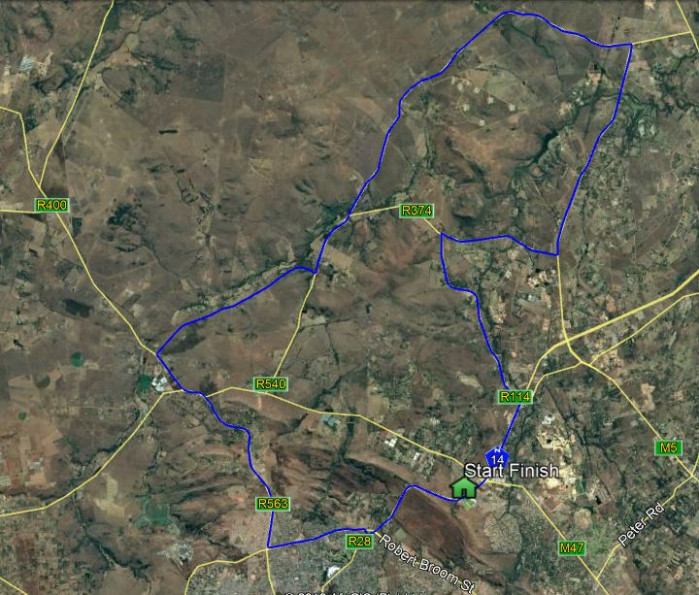
.jpg)
